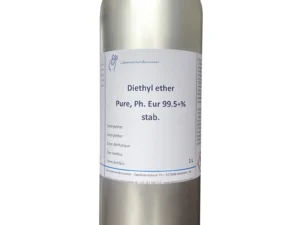Description
Chlorhexidine Gluconate: The Unsung Hero of Infection Control
Chlorhexidine gluconate (CHG) – the name might not roll off the tongue, but this powerful antiseptic is a true unsung hero in the fight against infection. From surgical scrubs to everyday mouthwash, CHG plays a vital role in killing germs and preventing the spread of disease. But what exactly is it, and why is it so effective?
What is Chlorhexidine Gluconate?
CHG is a broad-spectrum antiseptic and disinfectant. It works by disrupting the cell membranes of bacteria, fungi, and some viruses, leading to their death. Unlike some other antiseptics, CHG has a “residual effect,” meaning it continues to kill germs for a period of time after application. This prolonged activity is a key reason for its widespread use in various healthcare settings.
Key Applications of Chlorhexidine Gluconate:
CHG’s versatility makes it an essential tool across diverse applications:
- Pre-Surgical Skin Preparation: This is perhaps one of the most critical uses of CHG. Applying CHG to the skin before surgery significantly reduces the risk of surgical site infections, which can lead to serious complications and prolonged hospital stays.
- Wound Care: CHG solutions can be used to clean minor cuts, scrapes, and burns, helping to prevent infection and promote healing.
- Oral Hygiene: CHG mouthwash is commonly prescribed to treat gingivitis (gum disease) and other oral infections. It effectively reduces plaque and bacteria in the mouth, contributing to healthier gums and teeth.
- Hand Hygiene: Healthcare professionals frequently use CHG-based hand rubs to disinfect their hands between patient contacts, reducing the transmission of infections within hospitals and clinics.
- Catheter Care: CHG is often used to cleanse the skin around catheter insertion sites, minimizing the risk of catheter-associated infections.
- Skin Cleansers: CHG is also found in some everyday skin cleansers, providing antimicrobial protection and helping to prevent the spread of germs in homes and other public settings.
Benefits of Using Chlorhexidine Gluconate:
- Broad-Spectrum Antimicrobial Activity: CHG effectively kills a wide range of bacteria, fungi, and some viruses.
- Long-Lasting Effect: The residual activity of CHG continues to provide protection even after application.
- Relatively Safe: When used as directed, CHG is generally safe and well-tolerated.
- Readily Available: CHG products are widely available in various formulations, including solutions, wipes, and scrubs.
Potential Side Effects and Precautions:
While generally safe, CHG can sometimes cause side effects. These may include:
- Skin Irritation: Some people may experience mild skin irritation, redness, or itching at the application site.
- Allergic Reactions: Although rare, allergic reactions to CHG can occur.
- Staining: CHG can sometimes cause temporary staining of the teeth or fabrics.
- Not for Internal Use: CHG is intended for external use only and should not be ingested.
Important Considerations:
- Follow Instructions Carefully: Always use CHG products as directed by a healthcare professional or according to the product label.
- Avoid Contact with Eyes and Ears: CHG can be irritating to the eyes and ears. Avoid contact with these areas.
- Consult a Doctor: Talk to your doctor if you have any concerns about using CHG or if you experience any adverse reactions.
The Future of CHG:
Research continues to explore new and innovative ways to utilize CHG to combat infections. Its proven effectiveness and long-lasting antimicrobial activity make it a valuable tool in the ongoing effort to protect public health.
In conclusion, chlorhexidine gluconate is a powerful and versatile antiseptic that plays a crucial role in preventing infections in various settings. From hospitals to homes, CHG is a silent guardian, working behind the scenes to keep us safe and healthy. Knowing its uses, benefits, and potential precautions can help you appreciate its importance and use it effectively when needed.
















Reviews
There are no reviews yet.